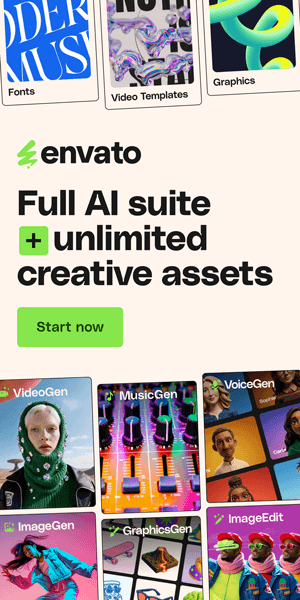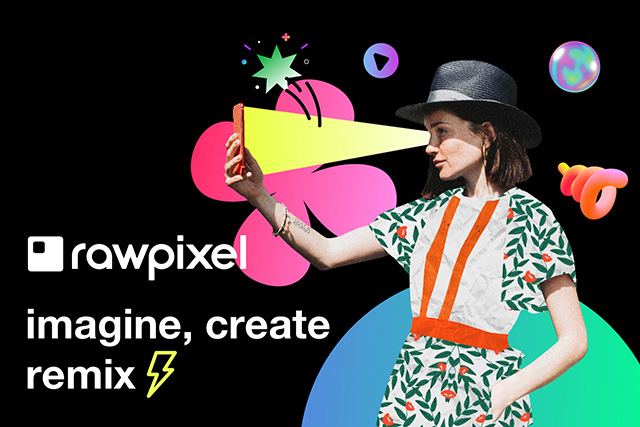Exploring the World of Experimental Escapism in Graphic Design
Introduction
Experimental escapism is a growing trend in graphic design that uses innovative techniques to transport viewers to otherworldly experiences. Designers are embracing new technologies and exploring new frontiers of creativity to create works that defy reality and capture the imagination.
Experimental escapism is a style of design that uses unconventional techniques and imagery to create a sense of wonder and exploration. Experimental escapist designers are not afraid to experiment and push the boundaries of what is possible. They draw inspiration from a wide range of sources, including science fiction, fantasy, nature, and the human psyche.
Different Types Of Experimental Escapism In Graphic Design
AI-Generated Art
One of the most popular experimental escapist techniques is AI-generated art. AI algorithms can be used to create stunning and surreal images that would be impossible to create by hand. Designers are using AI-generated art to create album covers, posters, and other visual works that transport viewers to otherworldly realms.
Yes, AI-generated art is a fascinating and rapidly evolving field with a wide range of applications, including escapism. AI algorithms can be used to create images that are both visually stunning and deeply immersive, allowing viewers to escape into otherworldly realms or explore their own subconscious minds.
One of the most popular ways to use AI-generated art for escapism is through digital art galleries. There are a number of websites and apps that allow users to browse and download AI-generated art for free. These galleries often feature a wide range of styles and genres, from abstract and surreal to realistic and fantastical.
Another way to use AI-generated art for escapism is through video games. A number of game developers have begun to incorporate AI-generated art into their games, creating stunning and dynamic environments that players can explore. For example, the game No Man's Sky uses AI to generate entire planets, each with its own unique flora, fauna, and terrain.
AI-generated art can also be used to create immersive experiences for other media, such as music videos, films, and television shows. For example, the music video for the song "Come Together" by the Beatles was created using AI to generate a series of surreal and psychedelic images.
Overall, AI-generated art is a powerful tool for escapism, allowing viewers to escape into otherworldly realms and explore their own imaginations. As AI technology continues to develop, we can expect to see even more innovative and immersive uses of AI-generated art in the future.
Here are some specific examples of AI-generated art that can be used for escapism:
Dreamlike landscapes: AI can be used to generate images of fantastical landscapes that are unlike anything found in the real world. These images can be used to create a sense of wonder and awe, and transport viewers to another place entirely.
Abstract and surreal imagery: AI can also be used to create abstract and surreal images that can be deeply evocative and thought-provoking. These images can help viewers to explore their own subconscious minds and tap into their creativity.
Portals to other worlds: AI can be used to create images of portals to other worlds, such as alien planets, alternate dimensions, and magical realms. These images can help viewers to escape from their everyday lives and experience something new and exciting.
If you are looking for a way to escape into otherworldly realms and explore your own imagination, then AI-generated art is a great option. There are many different ways to experience AI-generated art, so you can find a method that works best for you.
Metaverse Design
Another popular trend is Metaverse design. The Metaverse is a virtual world that is still in its early stages of development, but it has the potential to revolutionize the way we interact with digital media. Designers are already beginning to create immersive Metaverse experiences that transport users to fantastical worlds.
The metaverse is a rapidly growing trend in design, and for good reason. It offers designers a chance to create new and immersive experiences that were not possible before.
Here are some examples of metaverse design:
Virtual concerts: Metaverse concerts allow fans to experience their favorite artists live in a virtual setting. For example, Travis Scott held a virtual concert in Fortnite in 2020 that was attended by over 12 million people.
Virtual fashion shows: Metaverse fashion shows allow designers to showcase their latest collections in a virtual world. For example, Balenciaga held a virtual fashion show in Fortnite in 2021 that featured models wearing digital clothing.
Virtual workplaces: Metaverse workplaces allow employees to work together in a virtual environment. For example, Microsoft is developing a metaverse workplace called Mesh that will allow employees to collaborate on projects using avatars.
Virtual educational experiences: Metaverse educational experiences allow students to learn in a virtual setting. For example, the University of Illinois Chicago has developed a virtual campus where students can attend classes, meet with professors, and collaborate on projects.
These are just a few examples of the many different ways that metaverse design can be used to create immersive and engaging experiences. As the metaverse continues to develop, we can expect to see even more innovative and creative uses of metaverse design in the future.
Here are some design principles that are important to keep in mind when designing for the metaverse:
Immersion: The goal of metaverse design is to create an immersive experience that feels as real as possible. This can be achieved through the use of high-quality graphics, realistic physics, and interactive elements.
Socialization: The metaverse is a social space where people can interact with each other and build relationships. This is important to keep in mind when designing for the metaverse, as designers need to create opportunities for users to connect with each other.
Personalization: The metaverse should be a space where users can express themselves and feel unique. Designers can achieve this by allowing users to customize their avatars and virtual environments.
Discovery: The metaverse is a vast and ever-changing landscape. Designers need to create ways for users to discover new things and explore the metaverse at their own pace.
By following these design principles, designers can create immersive, social, personalized, and discoverable experiences for the metaverse.
Psychedelic-Inspired Design
Psychedelic-inspired design is another popular trend in experimental escapism, and for good reason. Psychedelic imagery and color palettes can create a sense of altered consciousness and perception, transporting viewers to otherworldly realms. Designers are using psychedelic-inspired design in a variety of ways, including:
Music album covers and poster art: Psychedelic-inspired design is often used in music album covers and poster art to create a visually arresting and evocative experience for fans. For example, the album cover for The Beatles' album "Sgt. Pepper's Lonely Hearts Club Band" is one of the most iconic examples of psychedelic-inspired design.
Website design: Psychedelic-inspired design can also be used to create visually appealing and engaging websites. For example, the website for the music festival Coachella uses psychedelic-inspired design to create a sense of excitement and anticipation for the event.
Fashion: Psychedelic-inspired design is also finding its way into fashion, with designers creating clothing and accessories that feature psychedelic patterns and colors. For example, the fashion designer Gucci has released several collections that feature psychedelic-inspired designs.
Psychedelic-inspired design is a powerful tool for escapism, allowing viewers to escape from the everyday world and experience something new and exciting. As the trend continues to grow, we can expect to see even more innovative and creative uses of psychedelic-inspired design in the future.
Surrealism
Surrealism is an art movement that emerged in the early 20th century. Surrealist artists are known for their dreamlike and often disturbing imagery that challenges our perceptions of reality.
Experimental escapist designers are using surrealist techniques to create works that are both visually stunning and thought-provoking.
One way that experimental escapist designers are using surrealism is to create juxtapositions of unrelated objects or images. This can create a sense of wonder and surprise, or it can be used to challenge our understanding of the world. For example, the surrealist artist Salvador Dalí is known for his painting The Persistence of Memory, which features melting clocks in a surreal landscape. This painting can be seen as a challenge to the traditional notion of time.
Another way that experimental escapist designers are using surrealism is to create images that are both familiar and unfamiliar at the same time. This can create a sense of unease or disorientation, which can be used to create a sense of escapism. For example, the surrealist artist René Magritte is known for his painting The Son of Man, which features a man with a green apple in front of his face. This painting is both familiar and unfamiliar, as it is a portrait of a man but with a key feature obscured. This can create a sense of unease or disorientation, which can be used to create a sense of escapism.
Experimental escapist designers are also using surrealism to create works that are interactive and participatory. This allows viewers to explore surreal worlds and create their own surreal experiences. For example, the artist and designer Björk created a virtual reality experience called Björk: Digital. This experience allows viewers to explore a surreal world inspired by Björk's music and art.
Surrealism is a powerful tool for experimental escapist designers. By using surrealist techniques, designers can create works that are both visually stunning and thought-provoking.
Surrealism can also be used to create immersive and participatory experiences that allow viewers to escape from their everyday lives and explore surreal worlds.
Examples of Experimental Escapist Graphic Design
Here are a few examples of experimental escapist graphic design:
Website design
The website for the Metaverse platform Decentraland is a great example of experimental escapist graphic design. The site features a surreal landscape of floating islands and strange creatures. It's a visually stunning and immersive experience that transports users to another world.
Album covers
The album cover for the album "Time Skiffs" by Animal Collective is a perfect example of psychedelic-inspired design. The cover features a collage of colorful and surreal imagery that evokes a sense of altered consciousness.
Poster Design
The poster for the film "Dune" is a great example of surrealist design. The poster features a giant sandworm looming over a desert landscape. It's a visually stunning and thought-provoking image that perfectly captures the atmosphere of the film.
Book covers
The book cover for the novel "Piranesi" by Susanna Clarke is a great example of AI-generated art. The cover features a surreal image of a young man standing on a beach in a world of endless staircases and hallways. It's a visually stunning and intriguing image that perfectly captures the tone of the novel.
The Future of Experimental Escapism in Graphic Design
How will new technologies impact experimental escapism?
New technologies are already having a major impact on experimental escapism in graphic design. For example, AI-generated art tools like DALL-E and Midjourney are allowing designers to create surreal and imaginative landscapes that were previously impossible. Additionally, the rise of the metaverse is opening up new possibilities for immersive and interactive design experiences.
In the future, we can expect to see even more innovative uses of technology in experimental escapism. For example, designers may use AI to create personalized experiences for viewers, or they may use VR and AR to create immersive worlds that people can explore.
What are the trends to watch for in the future?
Here are some of the trends to watch for in the future of experimental escapism in graphic design:
AI-generated art: AI-generated art will become increasingly sophisticated and accessible, allowing designers to create truly unique and innovative visuals.
Immersive design: Immersive design experiences will become more common, as VR and AR become more mainstream.
Data-driven design: Designers will use data to create personalized and engaging experiences for viewers.
Social design: Design will be used to create social experiences that connect people and build communities.
Sustainable design: Designers will be more mindful of the environmental impact of their work and will use sustainable materials and practices.
Overall, the future of experimental escapism in graphic design is very bright. As new technologies emerge and designers become more creative and innovative, we can expect to see even more amazing and immersive designs in the years to come.
Additionally, I would add that experimental escapism is likely to become increasingly important in the future as people seek to escape from the stresses and challenges of everyday life. Graphic designers can play a vital role in creating these immersive and imaginative experiences that help people to relax and recharge.
Conclusion
Experimental escapism is an exciting new trend in graphic design that is using innovative techniques to transport viewers to otherworldly experiences. Designers are embracing new technologies and exploring new frontiers of creativity to create works that defy reality and capture the imagination.
Experimental escapism is important because it allows us to escape from the everyday world and explore new and different possibilities. It can also be used to challenge our perceptions of reality and make us think about the world in new ways.
You May Also Like
Tags
Subscribe
Join the Advise Graphics community and get exclusive design resources, tips, and updates delivered straight to your inbox.
Quick links
Copyright
© 2025 Advise Graphics. All rights reserved.
Cop© 2025 Advise Graphics. All rights reserved.











